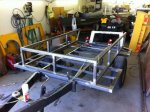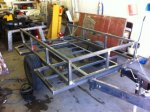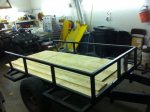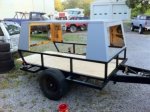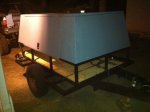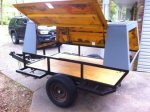According to the spec sheet:
http://www.solarelectricsupply.com/pdf/BP/BP_SX60.pdf
That panel has a Vmp (Voltage Max Power - i.e., voltage under load) of 16.8v, and a Voc (Voltage Open Circuit - i.e., voltage under no load) of 21v.
That's right on the money for a "12v nominal" solar panel. To get a "12v" battery fully charged can take up to 15v, and the panel has to put out a bit more than that.
If you put that panel in full sun and see less than 21 volts with no load, or less than 16v with a load - then there's a problem. If the panel can't put out at least 16v under load then it won't fully charge a 12v battery.
As to the advice to use two 6v batteries - it's irrelevant.
Both are just collections of 2v cells - so either way to get 12v you'll end up with 6 2v cells. The only way that two 6v batteries will give you double the capacity, is if there is double the lead and acid. You could just as easily buy a 12v battery that has the same amount of lead and acid - it'll be twice the size and weight, just like 2 6v batteries will be twice the size and weight.
100lbs of lead and acid will give you X capacity - whether it's two 50lb 6v batteries rigged in series to get 12v, two 50lb 12v batteries rigged in parallel to get 12v, or one 100lb 12v battery. The amp*hours per pound of lead will be the same whichever way you go.
Using a couple of smaller batteries can be handy to save your back, but then you'll also have to deal with extra cables so it's up to you which way you go.


